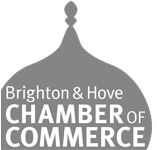

Reputation is critical to the success of any business. People pay attention to what is being said about your business and this largely influences their decision to buy from you.
The good news is that in today’s world, you can use social media to effectively control how people see you in the marketplace and properly showcase your brand’s credibility. The following tips can help you get started.
Table Of Contents:
- 1 - Develop The Right Strategy
- 2 - Build Relationships
- 3 - Know What to Do When Things Go Wrong
- 4 - Introduction to Traditional Online Reputation Management:
- 5 - Key ORM Strategies:
- 6 - Traditional ORM: Creating a Persona/Online Brand:
- 7 - What To Expect: Traditional ORM
- 8 - URL Clustering: Advanced ORM
- 9 - Why This Is Important:
- 10 - Just Because You Bury a Problem Does Not Mean It Has Gone Away.
Develop The Right Strategy
The first step in using social media for your reputation management is to develop a robust social media strategy. There are social media platforms that are known to cater to a particular niche, look for those that cater to your target market and get involved. However, regardless of the platforms you choose to use, make sure you implement these 3 rules:
- Pay attention – to conversations happening on social media that involve your brand, industry and competitors. Listen for mentions about your brand name or products. The information you derive here will be of great help in keeping a finger on the pulse of people that matter to your business.
- Be engaging – your content on social media has to be relevant and useful to your intended audience otherwise they will not connect with it. However, every aspect of your social media activity should be geared towards showing your business in the best light.
- Be authentic – while social media makes for a great marketing tool, you need to define when you are using it as a marketing platform and when you are using it to build your brand. Don’t overwhelm your audience with marketing spiel; instead engage them with conversations they can readily relate to.
Build Relationships
The aim of using social media is to make sure that the right messages reache the right people. And for this to happen, you have to start by posting relevant conversations that will help people connect with your brand. The idea here is to look for articles and information that show you as credible and trusted experts in your industry. When people feel that you know what you are talking about, and care about their needs, they want to associate with you. This is a good way to build relationships. When you have a sizeable number of dedicated followers who trust your judgment, you will spend less time defending any issue, as they will do it for you.
Know What to Do When Things Go Wrong
“It takes twenty years to build a reputation and five minutes to destroy it,” Warren Buffet. This is so true.
There are times when you will not live up to the expectations of people that follow your brand. When this happens, it is important that you know how to handle it. Follow up on negative reviews or comments on your social media platforms and look for ways to make amends. It could be politely explaining to the customer why things didn’t work as he or she expect, or making a heartfelt apology and promising to do better. Of course, we all know that customers are not always right, so you may need to have someone qualified handle the situation so that you don’t react in a way that would escalate the situation. And a great piece of advice is to try and move any conversations about something negative offline (remember the world is watching so avoid a debate about it on social media). Instead, discuss and resolve offline and post a response to the initial complaint or review with the resolution so that everyone can see you’ve taken positive steps to resolve it.
What happens on social media never stays on social media. It has a way of going global in very little time. With the right skills and the right tools, you can use social media to effectively turn your business into a well trusted brand, globally with good engagement.
Introduction to Traditional Online Reputation Management:
- ORM is the process of re-enforcing / creating strong web properties relating to a client’s brand that have the authority to take precedence over URL’s that portray a client’s brand in a negative light and are visible within search engines when users enter brand/money keywords.
- The key is controlling the top 3-5 pages of Google’s results ensuring undesirable URLS are kept out of sight and out of mind.
- The approach required for each client differs significantly.
- Online Reputation Management requires research, a comprehensive understanding of a client’s web presence, coupled with an understanding of how search engines work and the resources available (links/PR) to influence the ranking of not just one URL but many URLS simultaneously.
- Where a client does not maintain their own web presence, one must be created and maintained. This includes major social profiles, website(s), Wikipedia placement, Entity creation and link building.
- Where articles placed on local/national media are displayed prominently on branded searches a PR strategy may be required.
Key ORM Strategies:
Traditional ORM: Creating a Persona/Online Brand:
- Create Facebook, Twitter, Google Plus & other major social profiles.
- Grow each profile, cross-linking between various properties and adding content.
- One or more websites/blogs using structured data.
- Place keyword rich articles on high authority sites.
- If no editorial exposure exists use PR to gain placement in major editorial websites/national/local media to validate the creation of a Wikipedia page.
- Create a Wikipedia page if none exists (easier said than done).
- Cross-link all of the above within Google Plus and Wikidata.
What To Expect: Traditional ORM
Over time branded social profiles that relate to an individual/business will gain authority and push down URLS with negative sentiment as they rank. This method is resource intensive and expensive.
URL Clustering: Advanced ORM
Clustering or host crowding is when multiple listings from the same domain appear throughout the natural search results for a particular keyword. For example:

Google views this as a poor user experience and prefers to offer the user greater diversity in the search listings. Google’s Penguin 2.0+ algorithm actively works to prevent/limit this from happening.
Why This Is Important:
It is possible to have Google place an undesirable URL into its supplemental index by adding content and building authority links to URLS on the same root domain that contains content with similar content/positive sentiment. This doesn’t always work but is worth exploring.
Try this – site:example.com KEYWORD
This should yield a list of URLs that rank for the target keyword, if more than one URL contains enough context to rank, then there is a chance you can convince Google a secondary/inoffensive URL is more relevant than the URL presently ranking.
Just Because You Bury a Problem Does Not Mean It Has Gone Away.
- Once an ORM project has been successfully completed, search results will need to be monitored.
- URL’s containing negative sentiment have a habit of re-appearing if left unchecked.
- Google frequently performs algorithmic changes/improvements. Techniques used to suppress a search result may become less effective over time or stop working altogether. Additionally, a suppressed URL may become more authoritative for any number of reasons and gain rank as a result.
- A client’s branded/money keywords will need to be monitored and action taken quickly should an undesirable URL resurface or start climbing.
- Sustained link building should be performed around branded properties and 3rd party websites on an ongoing basis to ensure a dominant brand presence on the first 3-5 pages of Google.







